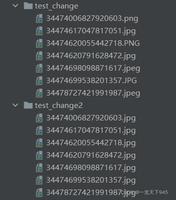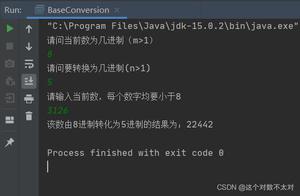Golang 将整数转换为二进制表示的程序
例子
例如,n = 1(1:1 的二进制表示)
例如,n = 5(5 的二进制表示:101)
例如,n = 20(5 的二进制表示:10100)
例如,n = 31(31 的二进制表示:11111)
解决这个问题的方法
步骤 1 - 定义一个接受整数n 的方法。
第 2 步-使用golang包将n转换为二进制表示
步骤 3 - 返回转换后的二进制表示。
示例
package main输出结果import (
"fmt"
"strconv"
)
func IntegerToBinary(n int) string {
return strconv.FormatInt(int64(n), 2)
}
func main(){
n := 1
fmt.Printf("Binary Representation of %d is %s.\n", n, IntegerToBinary(n))
n = 5
fmt.Printf("Binary Representation of %d is %s.\n", n, IntegerToBinary(n))
n = 20
fmt.Printf("Binary Representation of %d is %s.\n", n, IntegerToBinary(n))
n = 31
fmt.Printf("Binary Representation of %d is %s.\n", n, IntegerToBinary(n))
}
Binary Representation of 1 is 1.Binary Representation of 5 is 101.
Binary Representation of 20 is 10100.
Binary Representation of 31 is 11111.
以上是 Golang 将整数转换为二进制表示的程序 的全部内容, 来源链接: utcz.com/z/327570.html








